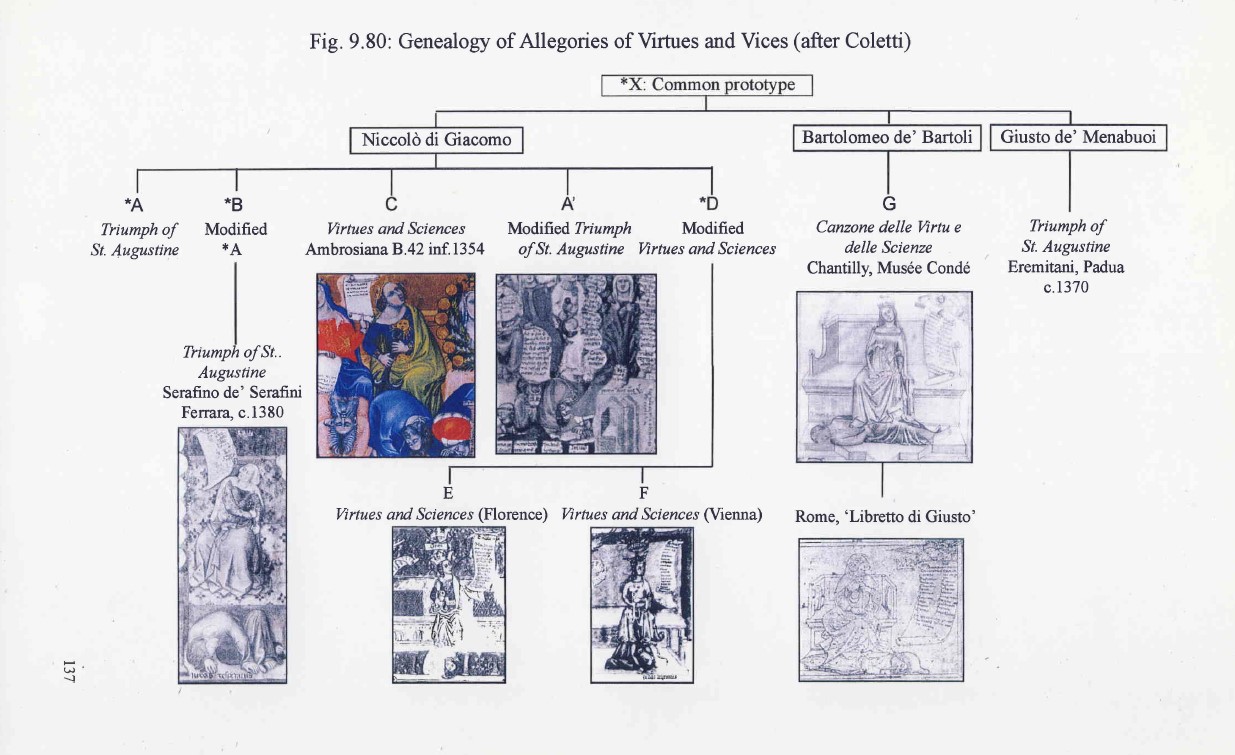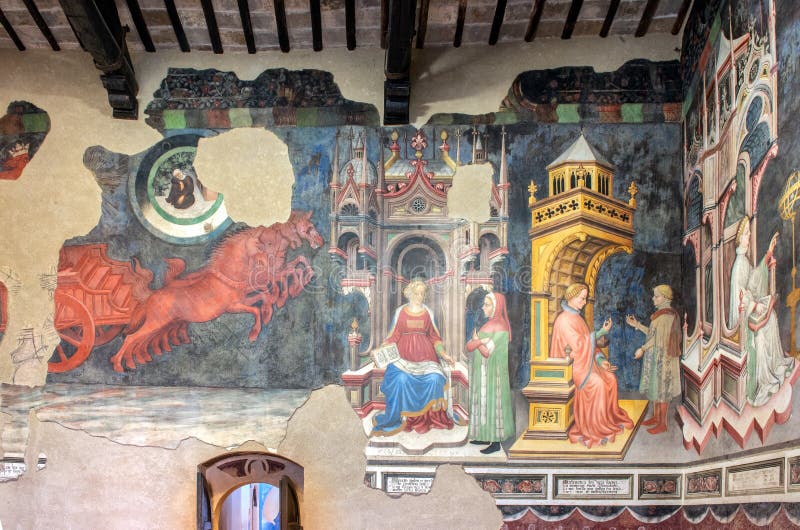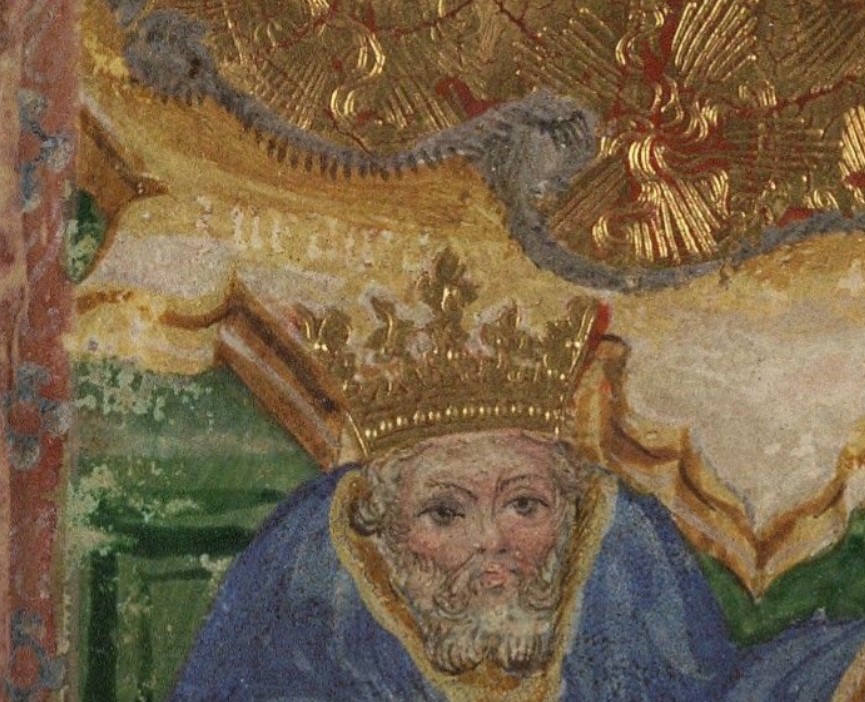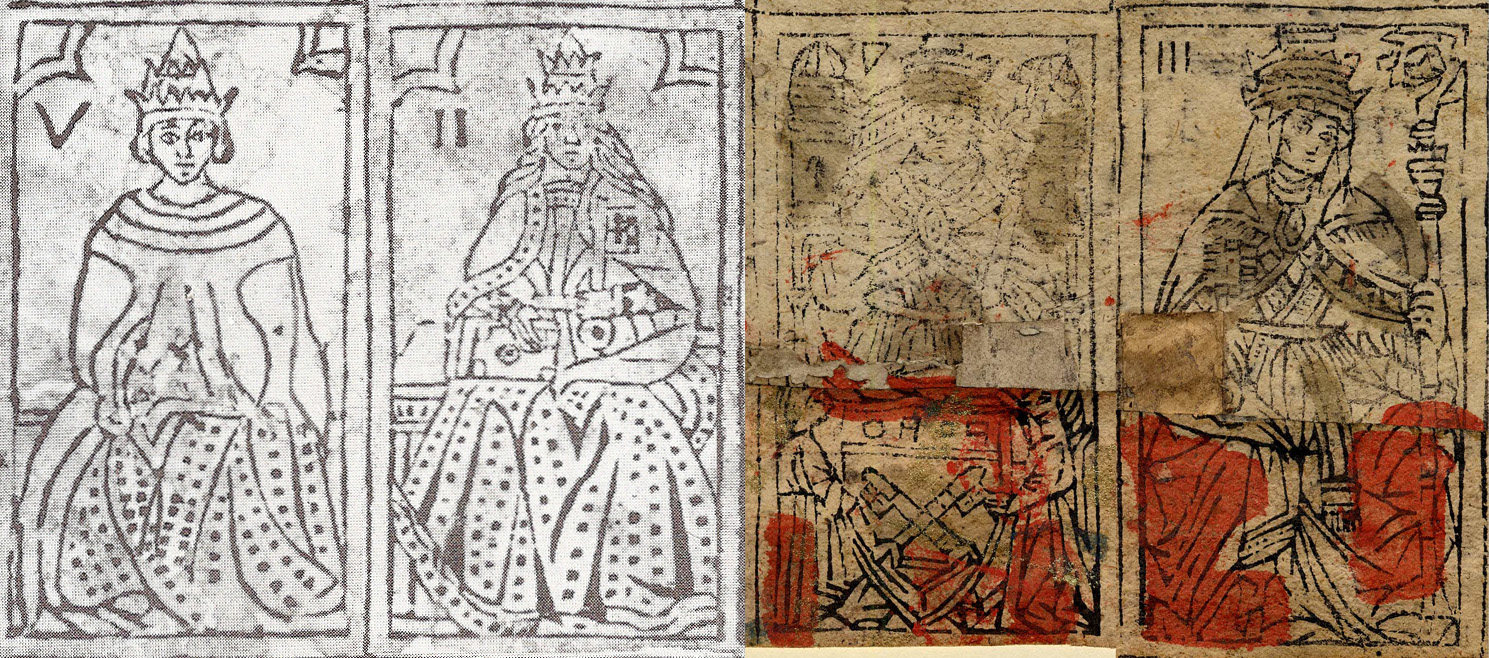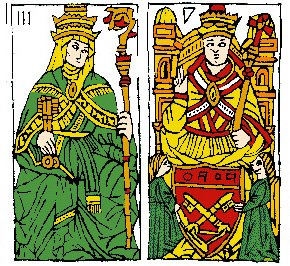Phaeded wrote,
The key difference is the liberal arts necessarily show positive examples engaged in the art in question, while the virtues, in these earlier examples, always overcome a negative vice exemplum. Following the arts in providing a positive exempli for the virtues is not beyond "splitting hairs" - its changing the theological/moralistic tone (overcoming sin) and placing the focus on being an upstanding civic participant - being a successful burgher
I see what you mean. Thanks. "Song of the Virtues and Liberal Arts" does not have positive examples along with the personifications of the virtues. In the case of Fortitude, what it uses the example as its image of the virtue: in this case Samson. There is also Judith, on the side. Here is Dorez, p. 27-28, with my translation:
Carta 3 r. - Segue la Fortezza (Forttiudo). Sopra un monte, che ha il
sinistro fianco adorno di fiorite pianticelle (papaveri selvatici e margherite), sorge
una torre a due piani. Di questi il secondo, più stretto dell'altro e senza finestre,
reca queste parole: Magnanimitas Magnificentia Fiducia Pacientia Perseve-
rantia Constantia Securitas Tollerantia (sic). A pie del monte si vede, a sini-
stra, un giovane incoronato, armato da capo a piede, di cui una vesta partita di
verde e di rosso ricopre il giaco di maglia ; è Sansone, che con ambo le mani
divarica le mascelle dell'atterrato leone. A destra, sotto un padiglione, sovra un
28 LEONE DOREZ
letto coperto di drappi bianchi ed azzurri giace il barbuto Oloferne, cui domina
ludith, inginocchiata, con una grande squarcina mozza il capo. Al capezzale del
letto, l'ancella delPeroina, donna d'età piuttosto avanzata, ravvolta in un cappuccio
bruno, aspetta il compimento dell'opera per serrare in un sacco, di cui già tien
aperta la bocca, il teschio del nemico (Olloffernes).
Folio 3r. – There follows Fortezza (Fortitudo). On a mountain, of which the left side is adorned with flowers (wild poppies and daisies), rises a two-story tower. Of these the second, narrower than the other and no windows, bears these words: Magnanimitas Magnificentia Fiducia Pacientia Perseverantia Constantia Securitas Tollerantia (sic). At the foot of the mountain you see on the left, a crowned young man, armed from head to foot, with a vest of green and red covering a coat of mail; it is Samson who with both hands spread apart the jaws of a fallen lion. On the right, under a pavilion, on a [start p. 28] bed covered with white and blue drapes lies the bearded Holofernes, of whom domina Iudith, kneeling, with a great slash, severs the head. At the head of the bed, the maid Peroina, a woman of rather advanced age, wrapped in a brown hood, waits for the fulfillment of the work to enclose in a sack, which she already holds with its mouth open, the skull of the enemy (Olloffernes).
The word "Fortitudo" actually appears above Samson. Judith is mentioned in the poem:
Mo s' tu voi la chiareza
Di suoi begli occhi haver[ej per tua lumiera,
Vivi in chotal mainiera
Liber[o], sechuro, aliegro. e poi la corte
D*amor t'avran consorte,
Si chom fiducia [in] Judith Olloferne
Havé, che '1 vixo dal chorpo glie dicerne.
For Justice (p. 30) there is the note in the margin:
De iusticia edidit Augustinus librum unum quiincipit: "Salomon sapientissimus„ et librum de perfectione iustitie
hominis; quam sic diffinit libro de moribus Ecclesie:
But Solomon is not in the illustration. Perhaps the crowned figure in the incipit below the illustration is meant to be him, although this is not the only incipit with a crowned figure. Photos of the pages are in the back of the book. Justice is on p. 122 of the archive.org scan and Fortitude p. 120,
https://archive.org/details/lacanzonede ... 0/mode/2up. I didn't see any other positive examples mentioned.
.
The Cary-Yale, of course would, seem to be following the virtues overcoming vices tradition of this and Nicolo, in the case of Hope, Faith, and Charity. Hope has an anchor (as in the Song of the Virtues illustration of Hope) and is on top of Judas. Faith would be over Mohammed (of more topical interest than Arius; I thought he was mentioned somewhere, but a word-search doesn't bring it up.). Charity over Herod, wearing a crown. Except Mohammed, these were standard. On the other hand, Fortitude, with the lion, is a female personification. Perhaps the knight on the CY World card is meant as an example of Fame, the lady on top. The chariot-lady with the shield might be both the personification and an example of Pudicizia. And likewise for the PMB "second artist" Fortitude.
